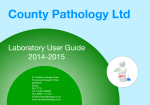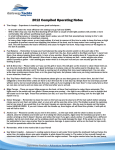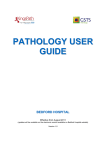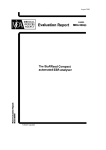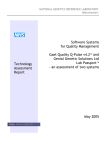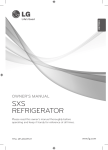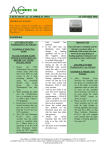Download Haematology User Guide - Central Manchester University Hospitals
Transcript
CMFT Trafford Hospitals Division Department of Pathology Haematology User Guide Document 115 Version 7 Haematology User Guide Location of Haematology Department ............................................... 2 Opening Hours .................................................................................... 2 Haematology Clinics ........................................................................... 2 Request Forms .................................................................................... 3 Identification Criteria........................................................................... 3 Collection and Transportation of specimens .................................... 3 Routine service.................................................................................... 4 Routine Investigations ........................................................................ 5 Full Blood Count (FBC) including Automated Differential Leucocyte Count ................................................................................................. 5 Erythrocyte Sedimentation Rate (ESR) .............................................. 6 Coagulation.......................................................................................... 6 Coagulation Tests Available ............................................................... 6 Patients taking Oral Anticoagulants .................................................... 7 Haemolytic Disorders.......................................................................... 8 Haemoglobinopathies ......................................................................... 8 Malarial Parasites ................................................................................ 8 Haematinic Assays .............................................................................. 9 Miscellaneous Tests.......................................................................... 10 Referred Work.................................................................................... 12 Quality Assurance Programmes ...................................................... 13 References ......................................................................................... 13 Authorised by Neil Laurie Page 1 of 13 The master copy of the current version of this document is held in Q-Pulse. Printed copies (provided they are current versions) may be retained for use where Q-Pulse is inaccessible CMFT Trafford Hospitals Division Department of Pathology Document 115 Haematology User Guide Version 7 Location of Haematology Department The department is situated on the lower floor of the Pathology Building, at the rear of the Hospital. Specimen Reception is on the lower reception floor, clearly signposted behind the patient reception desk. All samples delivered out of the routine opening hours below must be placed in the refrigerator besides the specimen reception window Opening Hours TGH 8.45am - 5.00pm Mon-Fri TGH 8.45am – 12.30pm Sat Biomedical Scientist on call at all other times (Bleep 060 through hospital switchboard) Dr. David M. Alderson, Consultant Haematologist 0161 746 2472 Ms. Judith Massey, Secretary 0161 746 2470 Dr. Patrick A. Carrington, Consultant Haematologist 0161 746 2490 Mrs Ann Winstanley, Secretary 0161 746 2855 Mr. Neil Laurie, Head Biomedical Scientist 0161 746 2491 Laboratory 0161 746 2493 Out of hours bleep number 060 Anticoagulant Service Sr Freda Sharpen 0161 746 2496 or bleep 102 Sr Karen Underwood S/N Ann Wright Haematology Clinics TGH Mon am, Thurs pm, Fri am Anticoagulant AGH Wed am Clinics are nurse led although a Haematologist is available TGH, Dr. D.M. Alderson, Tues am General Haematology TGH, Dr. P.A. Carrington, Mon pm AGH, Dr. D.M. Alderson or Dr Carrington, Thurs am Haematology Oncology Authorised by Neil Laurie TGH, Dr. D.M. Alderson, Wed am TGH, Dr. P.A. Carrington, Wed am Page 2 of 13 The master copy of the current version of this document is held in Q-Pulse. Printed copies (provided they are current versions) may be retained for use where Q-Pulse is inaccessible CMFT Trafford Hospitals Division Department of Pathology Document 115 Haematology User Guide Version 7 Request Forms There is a combined Hospital Haematology/Chemistry request form for hand-written inpatient requests and a combined GP request form containing Chemistry, Haematology and Microbiology. Electronic requesting should be used where available. The patient’s full name and date of birth must be clearly visible and legible on both request form and specimen. Identification Criteria Sample Essential Desirable Patients full name or correctly coded identification Time sample taken (sometimes essential) Hospital or NHS Number Date of Birth Date collected Request Form Patients full name or correctly coded identification Date of birth Sex of patient Report destination Clinicians bleep No Signature of requesting Clinician Patients address Clinical details Time collected Requesting Consultant or GP (including computer code) Requesting Clinician Date collected Electronic record or NHS number The doctor’s name and report destination must be clearly printed to allow reports to be returned to the appropriate location. Specimens must be placed into the attached bag and sealed correctly. Please see the Pathology Sample Acceptance Criteria for further details. Collection and Transportation of specimens The ‘Monovette’ blood collection system, comprising a combined syringe/container and a needle with valve for multiple samples, is used. If difficulties are experienced, contact the laboratory. Sharing of samples with other departments is not acceptable and may result in samples not being analysed for all tests. Labelling for Danger of Infection Authorised by Neil Laurie Page 3 of 13 The master copy of the current version of this document is held in Q-Pulse. Printed copies (provided they are current versions) may be retained for use where Q-Pulse is inaccessible CMFT Trafford Hospitals Division Department of Pathology Document 115 Haematology User Guide Version 7 All Pathology specimens and request forms MUST be transported in bags identified with the “Biohazard” logo. Specimen containers and transport bags must be securely sealed. Each request form should include sufficient clinical information to enable laboratory personnel to adopt additional safety precautions should they be required. Any specimen sent from a patient with known or suspected HIV, Hepatitis B or C must have a yellow ‘INOCULATION RISK’ label affixed clearly to both the specimen container and request form. Patients who have developed a fever within 21 days of having returned form Africa or other countries where Lassa Fever or other Viral Haemorrhagic Fevers occur or who through their work may have had contact with any of these viruses should be discussed with the department in Pathology before the collection or transport of specimens to establish a need for any special containment. The majority of requests require no more than 7.5 ml. of blood. However, some tests may vary. For general enquiries please phone extension 2492/3. Pneumatic Air Tube Transport System The following blood specimens must not be sent via the air tube: • any specimen from patients know to have, or thought to have: - transmissible spongiform encephalopathy (CJD, GSS etc) - a viral haemorrhagic fever (eg Lassa, Ebola etc) Specimen carriers Some areas of the hospital are served by porters who will carry samples to the laboratory but where this service is not available, it is essential that anyone carrying samples to the laboratory does so in accordance with the published laboratory guidelines - P04-005-F5 – “Guidelines for laboratory porters and messengers (including all staff carrying or handling samples for the laboratory)”. Specific laboratory containers (sealed red boxes) are provided for the safe transport of specimens to the laboratory from within the hospital, so samples must not be carried in the hand or in a pocket. Pathology and / or PCT transport services will collect samples from the PCT and other local hospitals on a daily basis. Routine service Most results are available on the day of receipt of sample in the laboratory Urgent service The majority of urgent samples will be analysed within one hour of receipt in the laboratory. This includes • FBC including WBC differential • Clotting tests – PT/INR, APTT, D-Dimer, Thrombin time & Plasma Fibrinogen Authorised by Neil Laurie Page 4 of 13 The master copy of the current version of this document is held in Q-Pulse. Printed copies (provided they are current versions) may be retained for use where Q-Pulse is inaccessible CMFT Trafford Hospitals Division Department of Pathology Document 115 Haematology User Guide Version 7 Processing of other urgent tests will commence within an hour of receipt but results may take up to two hours. This includes • ESR and Screen for Malarial Parasites • Haematinic requests will be analysed the next working day Routine Investigations Full Blood Count (FBC) including Automated Differential Leucocyte Count 2.7ml. blood EDTA (Red) tube required (minimum volume required is approximately 0.5ml) Analysis includes Hb, PCV, MCV, MCH, MCHC, platelets WBC and WBC differential. Haematology analysers provide highly accurate automated differential counts for all five leucocyte populations. Blood films will normally be made at the discretion of the laboratory staff and/or Consultant Haematologist Test Reference Range (Adult) Stability Turnaround time 0 (2 – 8 C) RBC Male Female 12 4.46 – 5.54 x 10 /L 2 days 4 hours 2 days 4 hours 2 days 4 hours 12 3.87 – 5.51 x 10 /L Haemoglobin Male 120 – 175 g/L Female 115 – 165 g/L Elderly 125 – 169 g/L Haematocrit Male 40 – 54% Female 37 – 47% MCV 80 – 98 fL 2 days 4 hours MCH 27.0 – 34.0 pg 2 days 4 hours MCHC 310 – 360 g/L 2 days 4 hours RDW 11.8 – 14.8 2 days 4 hours 9 2 days 4 hours 9 2 days 4 hours WBC 3.5 – 11.0 x 10 /L Platelets 130 – 450 x 10 /L 9 Reticulocytes 21 – 81 x 10 /L 2 days 4 hours MPV 7.1 – 10.7 fL Neutrophils Lymphocytes Monocytes Eosinophils Basophils Authorised by Neil Laurie 2 days 4 hours 9 2 days 4 hours 9 2 days 4 hours 2 days 4 hours 2 days 4 hours 2 days 4 hours 1.7 – 7.9 x 10 /L 1.0 – 4.0 x 10 /L 9 0.2 – 0.8 x 10 /L 9 0.04 – 0.4 x 10 /L 9 0 – 0.1 x 10 /L Page 5 of 13 The master copy of the current version of this document is held in Q-Pulse. Printed copies (provided they are current versions) may be retained for use where Q-Pulse is inaccessible CMFT Trafford Hospitals Division Department of Pathology Document 115 Haematology User Guide Version 7 Erythrocyte Sedimentation Rate (ESR) 2.7ml. blood EDTA (Red) tube required. The sample bottle MUST be correctly and fully filled to the top line with the plunger pulled to the bottom of the tube. Under filled tubes may be rejected as insufficient for ESR testing Reference ranges Stability Turnaround times (RT) Male age 17 - 50 0 - 10 mm/hr 51 - 60 0 - 12 mm/hr 61 - 70 0 - 14 mm/hr 71+ 0 - 30 mm/hr Female age 17 - 50 0 - 12 mm/hr 51 - 60 0 - 19 mm/hr 61 - 70 0 - 20 mm/hr 71+ 0 - 35 mm/hr 6 hours 4 hours Coagulation Suspected Bleeding Diathesis Take a full history of present and past bleeding incidents and enquire about family history and drug ingestion. Coagulation Tests Available Test Prothrombin Time (PT) APTT INR Thrombin Time Fibrinogen Assay Quantity Tube Type Ref Range To mark exactly Green 10.3 – seconds 12.5 8 hours 4 hours To mark exactly Green 21.4 – seconds 29.3 8 hours 4 hours To mark exactly Green guidelines 8 hours 4 hours To mark exactly Green 7.7 – 10.5 seconds 4 hours 4 hours To mark exactly Green 1.7 - 4.0 g/l 4 hours 4 hours Authorised by Neil Laurie (citrate) (citrate) (citrate) Stability (RT) See below Turnaround Times (citrate) (citrate) Page 6 of 13 The master copy of the current version of this document is held in Q-Pulse. Printed copies (provided they are current versions) may be retained for use where Q-Pulse is inaccessible CMFT Trafford Hospitals Division Department of Pathology Document 115 Haematology User Guide D-Dimer Version 7 To mark exactly Green Lupus Anticoagulant To mark exactly Green x 4 Thrombophilia Screen (Protein C & S, ATIII & APCR) To mark exactly Green x 6 Factor Assays Contact Consultant Haematologist <500 µg/l 4 hours 4 hours 4 hours 2 weeks 4 hours 2-4 weeks (sent to referral laboratory) (citrate) (citrate) (citrate) Please note that under filled samples cannot be tested Patients taking Oral Anticoagulants These should be monitored by the international normalised ratio (INR). The therapeutic level 2.0 - 4.5 depends upon condition treated. An INR of within 0.5 units of target is generally satisfactory. Indication Target INR Pulmonary Embolus 2.5 Proximal Deep Vein Thrombosis 2.5 Calf Vein Thrombosis 2.5 Recurrence of Venous Thrombo-embolism when no longer on Warfarin therapy 2.5 Recurrence of venous thrombo-embolism whilst on Warfarin therapy 3.5 Symptomatic inherited thrombophilia 2.5 Anti-Phospholipid syndrome 2.5 Non-rheumatic atrial fibrillation 2.5 Atrial fibrillation due to rheumatic heart disease 2.5 Congenital heart disease 2.5 Cardioversion 2.5 Mural thrombus 2.5 Cardiomyopathy 2.5 Mechanical prosthetic heart valve 3.5 Authorised by Neil Laurie Page 7 of 13 The master copy of the current version of this document is held in Q-Pulse. Printed copies (provided they are current versions) may be retained for use where Q-Pulse is inaccessible CMFT Trafford Hospitals Division Department of Pathology Document 115 Haematology User Guide Version 7 Haemolytic Disorders Screening involves a blood count & film, reticulocyte count, direct antiglobulin (Coombs) test and serum haptoglobins (Haematology) and serum bilirubin (Chemical Pathology). Other tests should be discussed with the Consultant Haematologist. Haemoglobinopathies A screen requires two EDTA (Red) specimens Test Quantity Tube Type Ref Ranges Stability 0 (2 – 8 C) Sickle Cell Screen including 2.7 ml. Hb Variant & Thalassaemia Screening 1 x red EDTA required (can be shared with FBC) Hb A2 1.5 – 3.2% Hb F < 1% Serum Ferritin Plain [brown] Turnaround Times 1 week 3 working days 1 week 1 working day 10 – 186 ng/ml (Female) 30 – 284 ng/ml (Male) A low MCV is common in iron deficiency and thalassaemia. Beta thalassaemia traits are usually not anaemic but characteristically show a raised HbA2 (>3.5%) and normal ferritin. Malarial Parasites A fresh EDTA samples is required – less than four hours old. All requests for malaria should give details of the country visited, if West/Central Africa, date of return to UK and date of onset of symptoms are required. Requests without this information cannot be processed until this is obtained due to potential risk to staff handling samples. A blood count will be performed routinely with each request. Sunquest ICE users please follow on screen instructions and complete the risk assessment Stability 4 hours Turnaround time 4 hours Authorised by Neil Laurie Page 8 of 13 The master copy of the current version of this document is held in Q-Pulse. Printed copies (provided they are current versions) may be retained for use where Q-Pulse is inaccessible CMFT Trafford Hospitals Division Department of Pathology Document 115 Haematology User Guide Version 7 Haematinic Assays The following tests are available Serum Vitamin B12, Serum Folate & Serum Ferritin Test Quantity Tube Type Ref Range Stability (2 – 80C) Serum B12 and Folate 7.5 ml. Serum Ferritin 7.5 ml Authorised by Neil Laurie One plain brown tube required B12 > 183 pg/ml Plain brown (only 1 required if B12 also required) 10 – 186 ng/ml Turnaround times 1 week 1 working day 1 week 1 working day Folate 4.6 – 18.7 ng/ml (Female) 30 – 284 ng/ml (Male) Page 9 of 13 The master copy of the current version of this document is held in Q-Pulse. Printed copies (provided they are current versions) may be retained for use where Q-Pulse is inaccessible CMFT Trafford Hospitals Division Department of Pathology Document 115 Haematology User Guide Version 7 Miscellaneous Tests Test Glandular Fever (EBV) Screening Test Haptoglobin Quantity Tube Type Ref Ranges Stability (Adult) 2.7 ml 1 x red EDTA (can be shared with FBC) negative 7.5 ml Plain (Brown) 0.45 – 1.99 g/L 24hrs if whole blood used. Plasma or serum can be fridged at 20 8 C for 48 hours or frozen 0 at -20 C for longer periods 1 week Turnaround times 1 working day 2 working days 0 (2 – 8 C) EPO stability from venepuncture: 0-8 hrs at room temp, air tight container, cell free sample Serum Erythropoeitin 7.5 ml Plain (Brown) 2 – 20 mu/ml 8-24 hrs at 28°C, air tight container, cell free sample 2 weeks (sent to specialised centre) Over 24hrs, frozen sample at -20°C Plasma Homocysteine 2 x EDTA EDTA (red) Factor V Leiden genetic test (includes Prothrombin Gene Variant G20210A) 2 x 3.4 ml citrate Citrate (green) HFE gene typing (Haemachromatosis C282Y, H63D) 2 x EDTA EDTA (red) Chromosome Studies* 5-10 ml Heparin (Orange) 1ml Authorised by Neil Laurie 0.0 – 16.0 umol/l Plasma must be separated from cells within 1 hour of collection before freezing 1 week (sent to specialised centre) 2 weeks 0 (2 – 8 C) (sent to specialised centre) 2 weeks 1 week (2 – 8 C) (sent to specialised centre) Must arrive in referral laboratory within 48 hours Urgent 7 working days 0 if 2 weeks Routine Page 10 of 13 The master copy of the current version of this document is held in Q-Pulse. Printed copies (provided they are current versions) may be retained for use where Q-Pulse is inaccessible 28 CMFT Trafford Hospitals Division Department of Pathology Document 115 Haematology User Guide Version 7 paediatrics Other DNA tests* 2 x EDTA (1ml if paediatric) of collection working days 1 – 6 weeks depending on the nature and complexity of the tests 1 week EDTA (red) 0 (2 – 8 C) *accompanied by appropriate request forms available from the laboratory Other specialised Haematologist. Tests by arrangement with the laboratory or Consultant All quoted turnaround times are approximate and are timed from receipt in the laboratory in either hours or working days (working weeks for sendaway tests) Authorised by Neil Laurie Page 11 of 13 The master copy of the current version of this document is held in Q-Pulse. Printed copies (provided they are current versions) may be retained for use where Q-Pulse is inaccessible CMFT Trafford Hospitals Division Department of Pathology Document 115 Haematology User Guide Version 7 Referred Work Although the majority of samples are processed in the laboratory at Trafford, some less frequently requested or highly specialised tests are referred to other hospitals. All referral laboratories are full CPA accredited and reports of these tests state the referral laboratory used. The most commonly used laboratories are Molecular Diagnostics Centre Department of Haematology Cytogenetics Department Manchester Royal Infirmary Manchester Royal Infirmary St Mary’s Hospital Manchester Manchester Hathersage Road M13 9WL M13 9WL Manchester M13 0JH Oncology Cytogenetics Haemostasis Laboratory Christie Hospital Specialist Haematology Wilmslow Road Block 32 Manchester St James’s University Hospital M20 4BX Beckett Street Leeds LS9 7TF Authorised by Neil Laurie Page 12 of 13 The master copy of the current version of this document is held in Q-Pulse. Printed copies (provided they are current versions) may be retained for use where Q-Pulse is inaccessible CMFT Trafford Hospitals Division Department of Pathology Document 115 Haematology User Guide Version 7 Quality Assurance Programmes As part of our on-going commitment to Quality and service improvement, we participate in all appropriate National External Quality Assurance schemes for Haematology. Internal Quality Control Comprehensive internal quality control procedures are followed in Haematology, covering all aspects of work in the laboratory. References Title Source Safe Working and the prevention of infection in Health Services Advisory Committee clinical laboratories and similar facilities 2003 Disinfection, decontamination spillage procedure and Pathology Quality Manual biological Pathology management procedure Trafford Healthcare NHS Trust A Practical Guide to Accreditation in Laboratory David Burnett Medicine Standards for the Medical Laboratory Authorised by Neil Laurie Clinical Pathology (UK) Ltd Accreditation Page 13 of 13 The master copy of the current version of this document is held in Q-Pulse. Printed copies (provided they are current versions) may be retained for use where Q-Pulse is inaccessible














